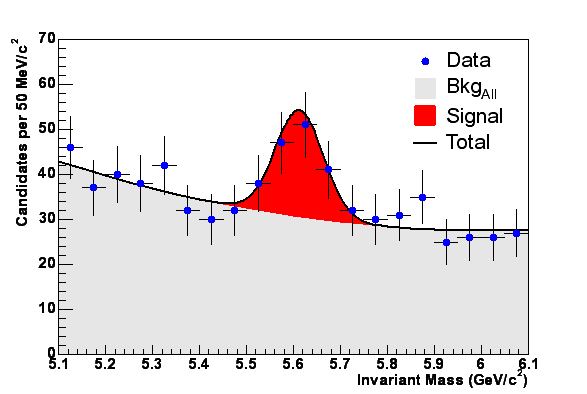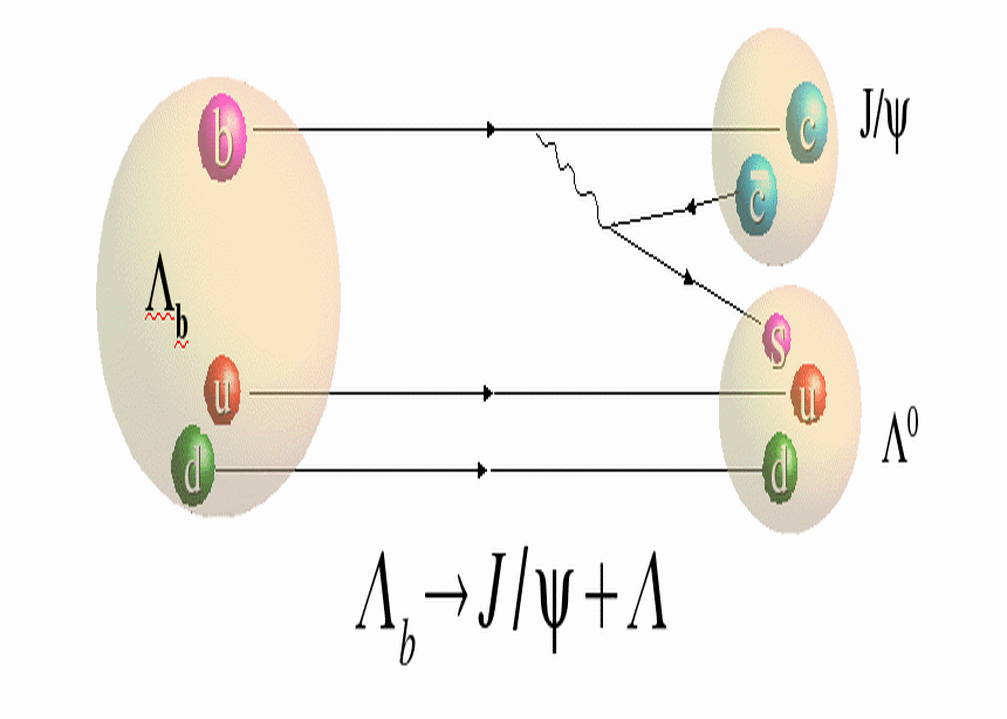Of tiny distances (microns) and the
structure of matter
|
We
know that the world is made of particles: leptons and quarks. Leptons
are
electron, muon, tau and their neutrinos; quarks are six and in
increasing order of mass are: up, down, strange, charm, bottom and top.
We also know
that the particles interact exchanging other particles, called gauge
bosons.
The Standard Model is the theory that describes the interactions among
particles. An interesting feature of the quarks is that they are never
observed isolated, they make hadrons, there are groups of two and three
quarks, called mesons and baryons respectively. If a quark is created
in a
collision of protons and antiproton then this quark picks up other
quarks to
form a hadron, this process is called hadronization.
 In collisions of protons and antiprotons in the Tevatron, hadrons containing the quark bottom are produced, but those hadrons live less than 1/1012 seconds. They become other particles due to the weak interaction. There are various models that try to explain how these hadrons decay into other particles. The most simple model predicts the same lifetime for all hadrons containing the bottom quark, however there are experiments that measured different lifetimes for the different B hadrons. Newer and more complex models have predicted different lifetimes of B hadrons very much in agreement with the measurements. One piece of this picture however is still not right, the measured lifetime of the Λb baryon does not agree with the theoretical prediction. Therefore a new measurement in a different environment can shed some light in this problem. The lifetime of the Λb was previously measured in cases where the Λb became a set of particles that included a muon. In D0 we can measure that lifetime when the Λb becomes a J/psi and a Λ0. The advantage of this measurement over the previous ones is that all particles that come from the Λb are observed while in those previous measurements one of the decay products was missing.  The measure of the lifetime of a particle means to measure the distance between two points, the point where the particle is created and the point where the particle ceases to exist and becomes other particles. In the case of the Λb this distance is of the order of hundreds of microns. To be able to measure these distances one has to have tools as precise as tens of microns, which we have. The D0 detector consists among other things of a component that is made of silicon that is capable of measuring distances of the order of hundreds of microns and therefore ideal to measure lifetimes of B hadrons. If we had a set of Λb baryons we would be ready to make the measurement, however, every time a proton and antiproton collide in the Tevatron many things can happen, rarely a Λb will be produced. That is why we need to find a way to distinguish events that look like a Λb. We collect only those events that have the signature of a Λb, i.e., Λb becomes a J/psi and a Λ0, but the J/psi becomes two muons and the Λ0 becomes a proton and a pion. These particles are stable and can be seen in our detector. Besides the Λb there are other processes that have the same signature and are impossible to separate. They are present in the data analyzed to measure the lifetime. Nevertheless they can be taken into account in the model used to measure the lifetime and in the end are not a problem. Besides the Λb, the B0 meson can decay into a J/psi and a K0s, having a very similar topology to the Λb decay used in the measurement. The lifetime of the B0 was also measured using the previous decay. Theory predicts the ratio of the Λb and B0 lifetimes and therefore both measurements, the Λb and B0 lifetimes, can be used to estimate the ratio and compare with the prediction. Predictions of recent models that try to describe the decay of these B hadrons agree with the result of our measurements, validating their model. A description of how we measured the Λb and B0 lifetimes is being published in the Scientific Journal Physical Review Letters. Comments or questions to About the Λb lifetime analysis |